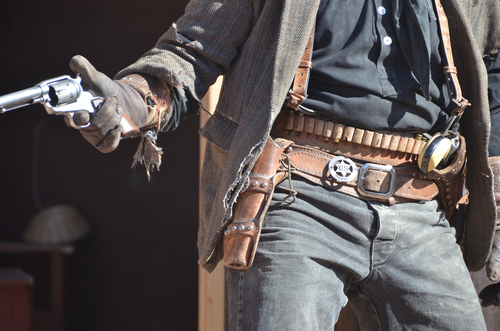
When one conjures images of a rugged cowboy, the silhouette is often that of a lone figure against a wild frontier, invariably white, as depicted by countless Hollywood films and dime novels.

Yet, this portrayal is a disservice to the diverse tapestry of individuals who truly shaped the Western landscape. Among these unsung heroes, Black cowboys have a particularly profound, though often overlooked, place in the annals of American history.

A photography exhibition at the Studio Museum in Harlem sought to challenge the monolithic portrayal by showcasing the legacy of Black cowboys and revealing the contemporary manifestations of this culture. As one artist, Brad Trent, puts it, the goal is to “retire the persistent myth that equates cowboys with whiteness.”

With approximately 25 percent of the 35,000 cowboys on the Western Frontier being Black, the truth defies the homogenous presentation frequently regurgitated by popular media.

Artists like Deanna Lawson and Ron Tarver provide visual narratives that extend beyond the frontier, capturing the lives of Black cowboys in unexpected environments such as the urban streets of New York.

The Federation of Black Cowboys in Queens, as photographed by Trent, serves not only as a testament to the endurance of cowboy culture but also as an educational hub where local youth can imbibe the values of patience, kindness, and tolerance inherent to the cowboy ethos.

The Black Cowboy Museum in Rosenberg, Texas, stands as a beacon of historical truth, where Larry Callies has dedicated his life savings to ensure the stories of Black cowboys like Bass Reeves—a former slave turned deputy U.S. marshal reputed to be the inspiration for the Lone Ranger—do not fade into obscurity.

“God told me to,” states Callies when asked why he created the museum, showcasing a tireless commitment to preserving this integral slice of American heritage.

Historically, Black cowboys have navigated a unique intersection of freedom and discrimination. In Texas, the cradle of the cowboy persona, free and enslaved Blacks were crucial to the cattle industry, developing skills that would become invaluable post-Civil War.

As scholar William Loren Katz remarks, “being a cowboy was one of the few jobs open to men of color,” offering a semblance of equality that was rare during that era. This sentiment is echoed in Nat Love’s autobiography, where he celebrates the “braver, truer set of men” he rode with, irrespective of race.

Despite contributing significantly to the iconic cattle drives and earning the respect of their peers, Black cowboys were not immune to the racial prejudices of their time.

Eleise Clark from the Black American West Museum & Heritage Center in Denver notes that “racism took a backseat to survival sometimes,” illustrating the complex dynamic where skill sometimes trumped social bias on the open range.

Their legacy continues to resonate today, with younger African Americans forming riding groups, organizing parades, and participating in events like the Black Cowboy Parade and the Bill Pickett Invitational Rodeo. These modern-day cowboys and cowgirls are not relics of a bygone era but active participants in the evolving narrative of the American West.

The true essence of the cowboy spirit—intrepid, independent, and egalitarian—transcends the color barrier and stands as a testament to the multicultural foundation of the United States.

As the Studio Museum and cultural champions like Larry Callies illustrate, the tale of America’s Black cowboys is not merely a chapter of the past but a living, breathing element of the nation’s identity. Through persistent education and acknowledgment, society can aspire to a historical consciousness that honors the full spectrum of its pioneers and their indelible imprint on the American landscape.
